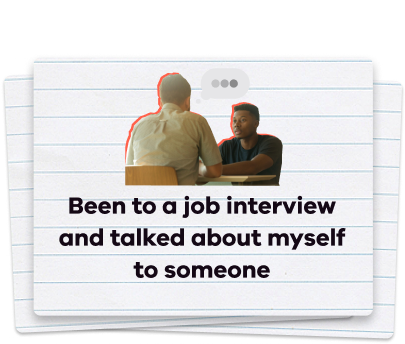A cover letter is a single-page letter that you include with your job application.
You should always include a cover letter, unless the job advertisement clearly says not to.
The purpose of a cover letter
When writing a cover letter, you should:
- introduce yourself
- mention the job (or type of job) you're applying for (or looking for)
- show that your skills and experience match the skills and experience needed to do the job
- encourage the reader to read your resume
- finish with a call to action (for example, asking for an interview or a meeting).
How long should a cover letter be?
Keep it short. A cover letter is meant to be a summary of your resume, so don’t write more than one page.
Matching your cover letter to the job
Use a different cover letter for each job you apply for. Your cover letter needs to show that you know what the job involves, and what the employer is looking for.
To do this, be specific about your skills and qualities. You also need to show how they match the needs of the job or the organisation.
Here are three simple ways to make your cover letter as specific as possible:
1. Find out who to address it to
Try not to address your letter ‘To whom it may concern’. Find out the name of the person who will read your application. This might take a little effort, but it's worth it.
If you found the job in an advertisement, it will probably name a person to send the application to. If it doesn’t, call the employer or advertiser and ask who to send the application to. Telephone is best, but email them if you can’t find a contact phone number.
If you find out the person's name, don't use their first name. Use either ‘Mr’ or ‘Ms’ and their last name instead.
2. Find out more about the job
When finding out who to address your application to, you could also try to contact that person so you can ask questions. This can help you match your cover letter (and resume) to the job.
You could ask:
- Does the job involve working as part of a team?
- Who would I be reporting to if I got the job?
- Can you tell me more about the kind of person you're looking for?
- Is there a position description I can look at? (Only ask this if the job advertisement doesn’t mention a position description).
Write down the answers to these questions as they can be used in your cover letter.
3. Find out more about the company
Find out more about the company so you can tailor your cover letter for the job. Here are some tips:
- If you know the name of the company, look for information online.
- If the company has a website, visit it (especially their ‘about us’ page).
- If the company name isn't in the advertisement, call the recruitment agency or advertiser and ask who the employer is.
What to include in your cover letter
Here's a list of things you should include in your cover letter. For examples of how to include these things, visit our sample resumes and sample cover letters pages.
Your name and contact details
Put your name and contact details at the top of your cover letter. You don't have to give your postal address, but you do need to include your email and phone number.
Your email address should create a professional impression. Don't use an email address with a silly or inappropriate name.
If you don't have a professional email address, you can make one with a free email provider. Make it simple – something that includes your first name and your last name is a good way to go.
Their name and contact details
Under your own name and contact details, you should include:
- the name of the person you're writing to
- their position or the name of their company
- their contact details.
If you're having trouble finding this information, you can call the company to ask who you should address your application to.
You can also use ‘Dear Hiring Manager’, but it’s best to only use this as a last resort. Try to avoid 'To whom it may concern.'
The name of the job you're going for
At the start of your cover letter you need to say which job you're applying for.
You can do this on a line by itself (for example, ‘Regarding: Application for Stock Controller position’).
You can also do this in the opening paragraph (for example, ‘I am writing to apply for the recently advertised Stock Controller position’).
A list of your relevant skills
Include a brief summary about how your skills and experiences match the job description. A short bullet list is fine.
If you're answering a job advertisement, there may be a position description that lists essential skills and experiences. It may also have a list of ‘desirable’ skills and experience. Your cover letter needs to respond to all of the items on the ‘essential’ list. You should also respond to as many items as you can on the ‘desirable’ list.
Remember that if you say you have a skill or experience, you need to show how you've used it or how you got it (for example, if you say you've got child-minding skills, mention some jobs where you've used them).
A summary of why you're right for the job
After listing your skills and experience, you should explain why these mean you're suited to the job (for example, ‘My ability to get along with others and my experience in solving customer problems in a retail setting make me ideally suited for this job’).
Speak their language
Using the same language as people who do a particular job shows that you understand the industry or field that the employer works in.
Find out what the employer does, and how they talk about themselves. Use this language in your cover letter.
For example, if there's a tool or software or skill the job requires, like machining tools or cash handling, mention it in your cover letter (but make sure you mention it correctly!).
Read our preparing for a job interview page to find more ways to research an employer.
Ask them to contact you
Your cover letter should finish by asking the employer to read your resume. It should also ask them to contact you about an interview.
Try something simple like, ‘I have attached a copy of my resume. I look forward to hearing from you about this job’.
What you shouldn't include in your cover letter
There are some things that should never be in your cover letter. Here are some things to watch out for:
Typos or mistakes
Always spell check your cover letter. It's even better to get someone else to read it and point out any mistakes or confusing things.
People you could ask to read your cover letter include friends, family members, your careers teacher or a careers counsellor at your university or TAFE.
Double-check everything in your cover letter. If you mention a company's name, make sure you spell it right. If you mention places you've worked before, make sure you spell their names correctly too.
Including your whole resume in your cover letter
Don't cut and paste your resume into your cover letter. Try to re-word the information in your resume, rather than just repeating it. Keep your cover letter short and let your resume tell the whole story.
Using ‘I’ too much
Try not to over use phrases like ‘I believe’, ‘I have’ and ‘I am’. Remember, it’s not about you – it’s about how you can help the employer.
Once you've written your letter, read over it, and try to take out or rewrite as many sentences that start with ‘I’ as you can.
Don't mention your other job applications
You're probably applying for more than one job at a time. However, it’s best not to mention other job applications. Your letter should aim to convince the employer that you really want this job.
Even though most employers will assume you're applying for more than one job, you don’t need to mention it.
Different kinds of cover letters
There may be times when you need use different kinds of cover letters. Visit the pages below for examples of these situations:
- cover letter when you have no work experience
- cover letter when you have some work experience
- cover letter when no resume is required
- cover letter when there’s no job advertised.

